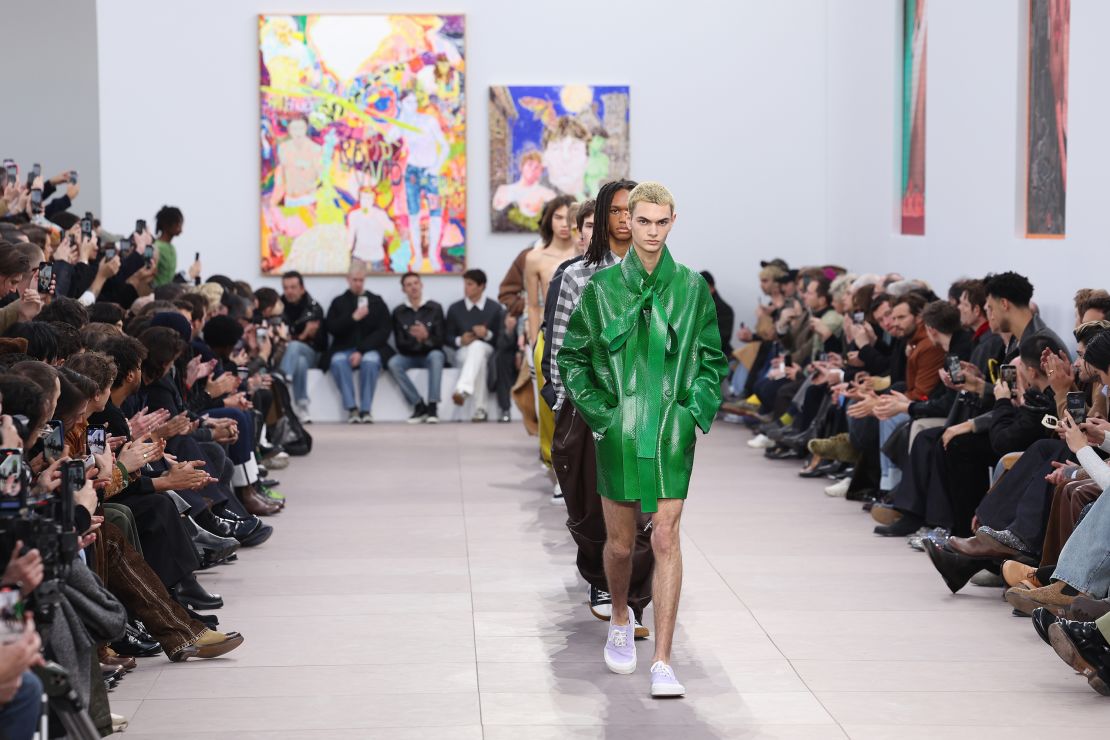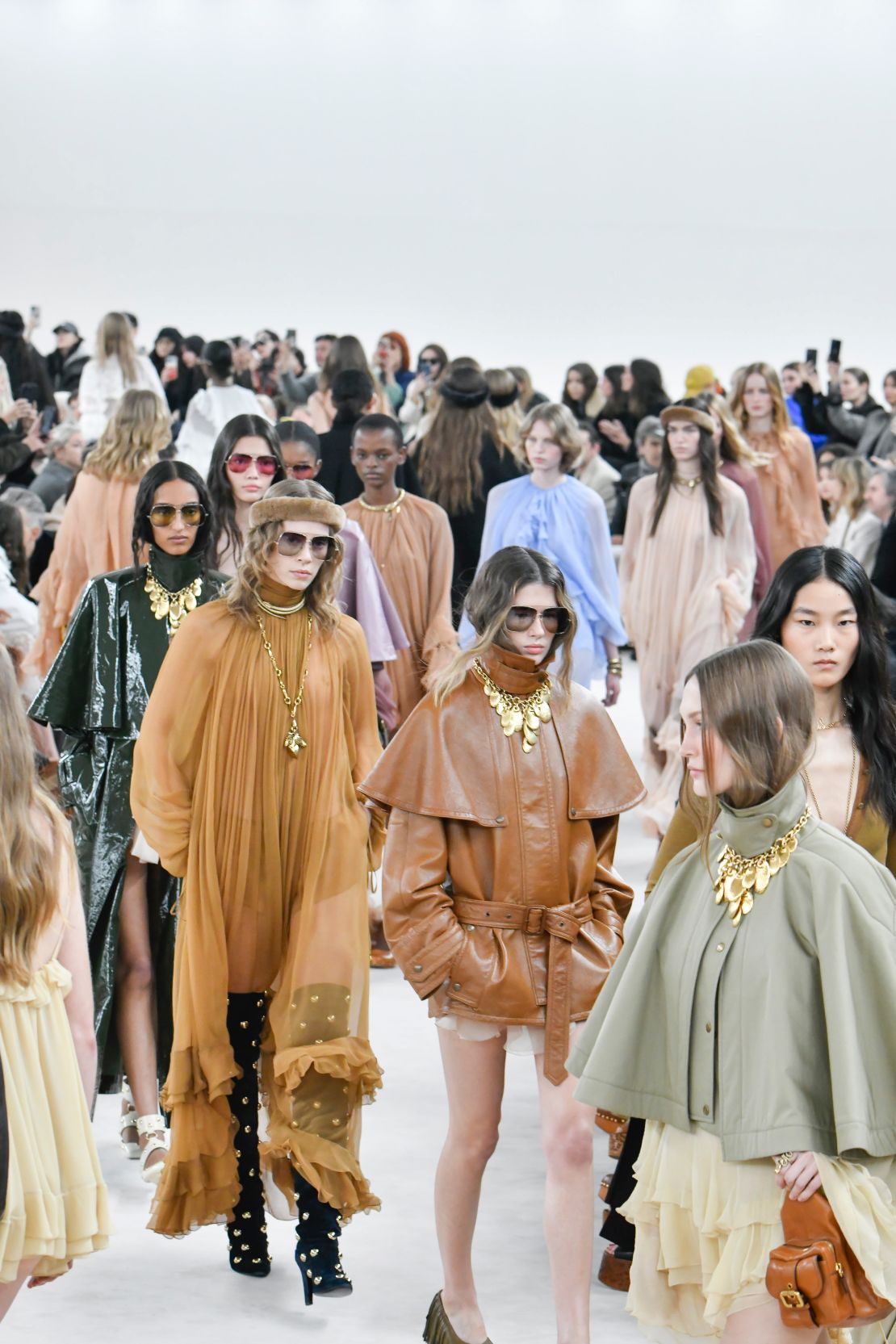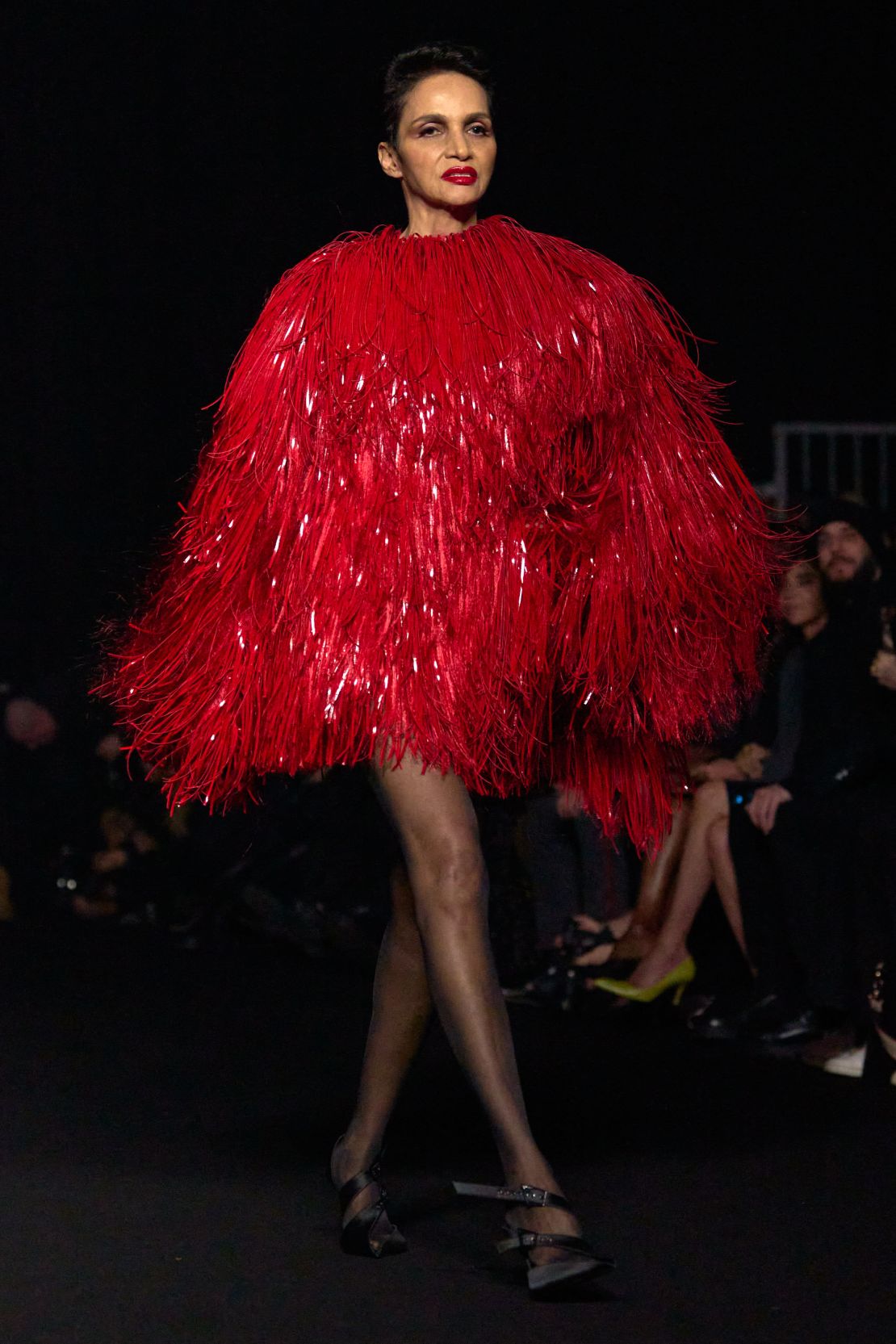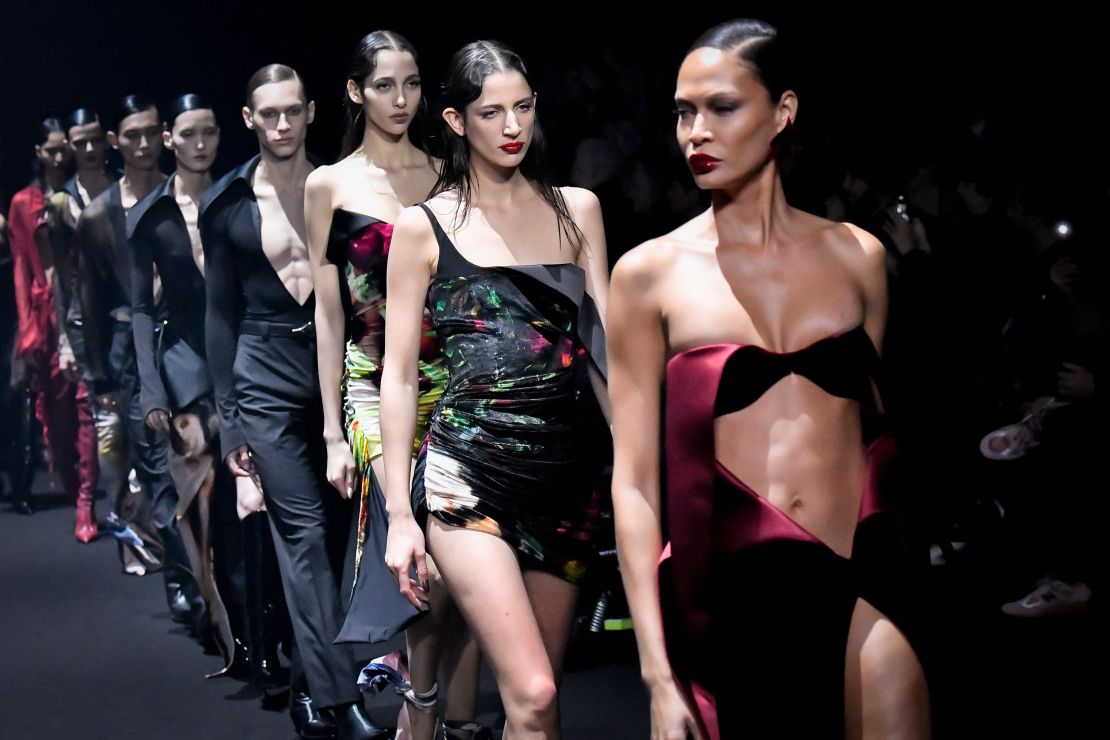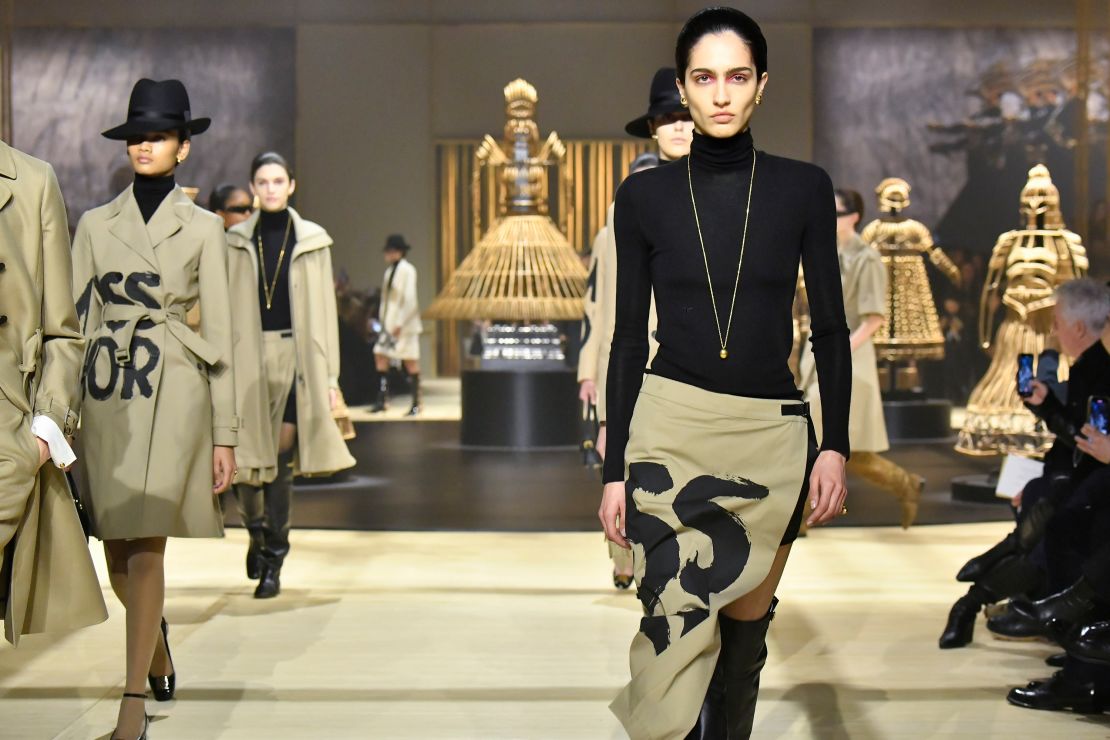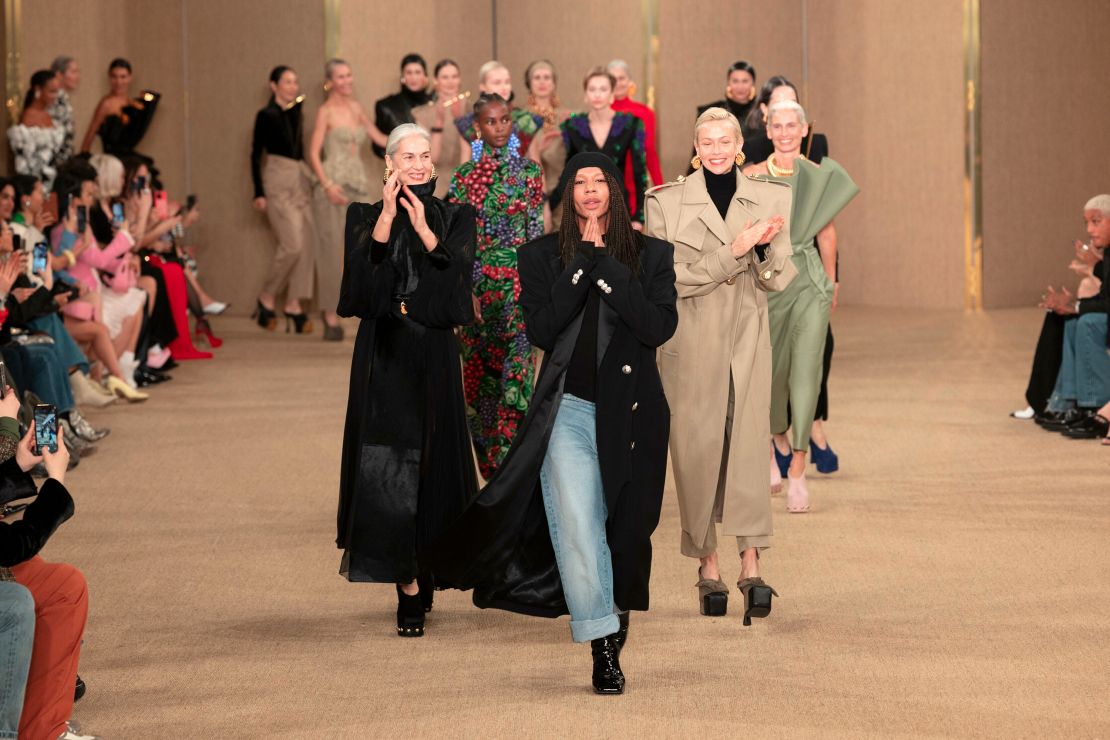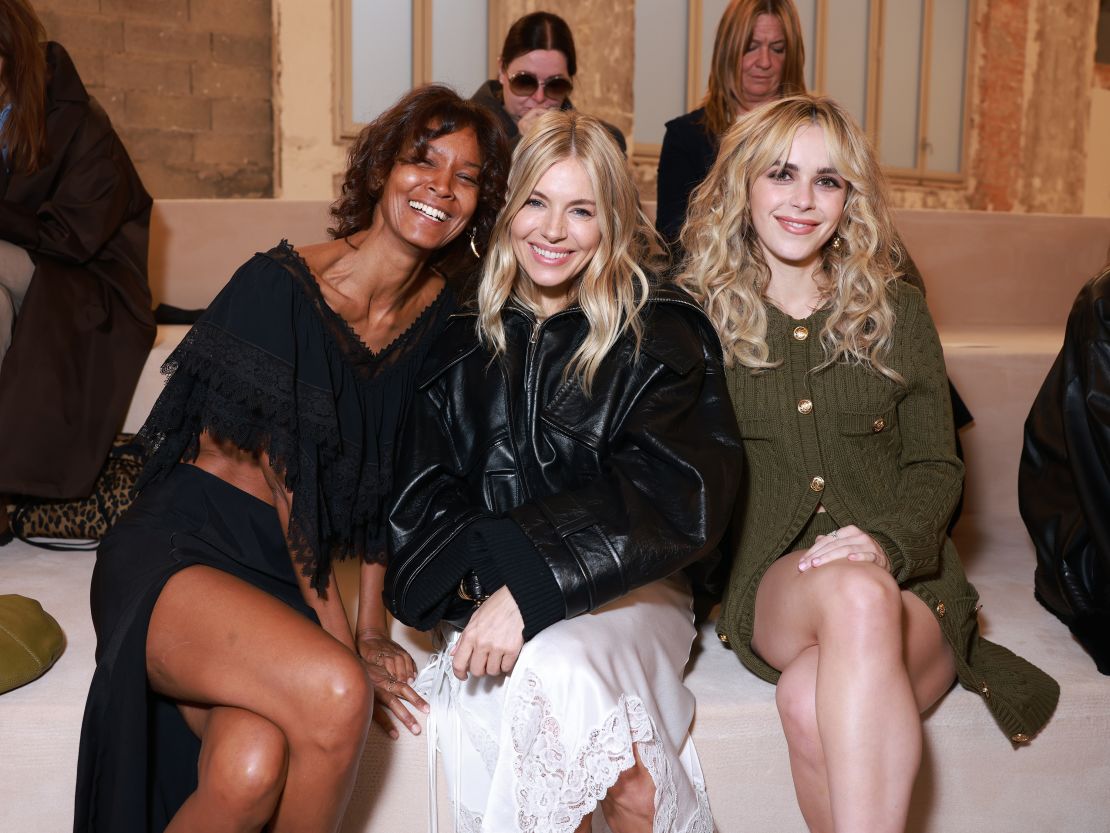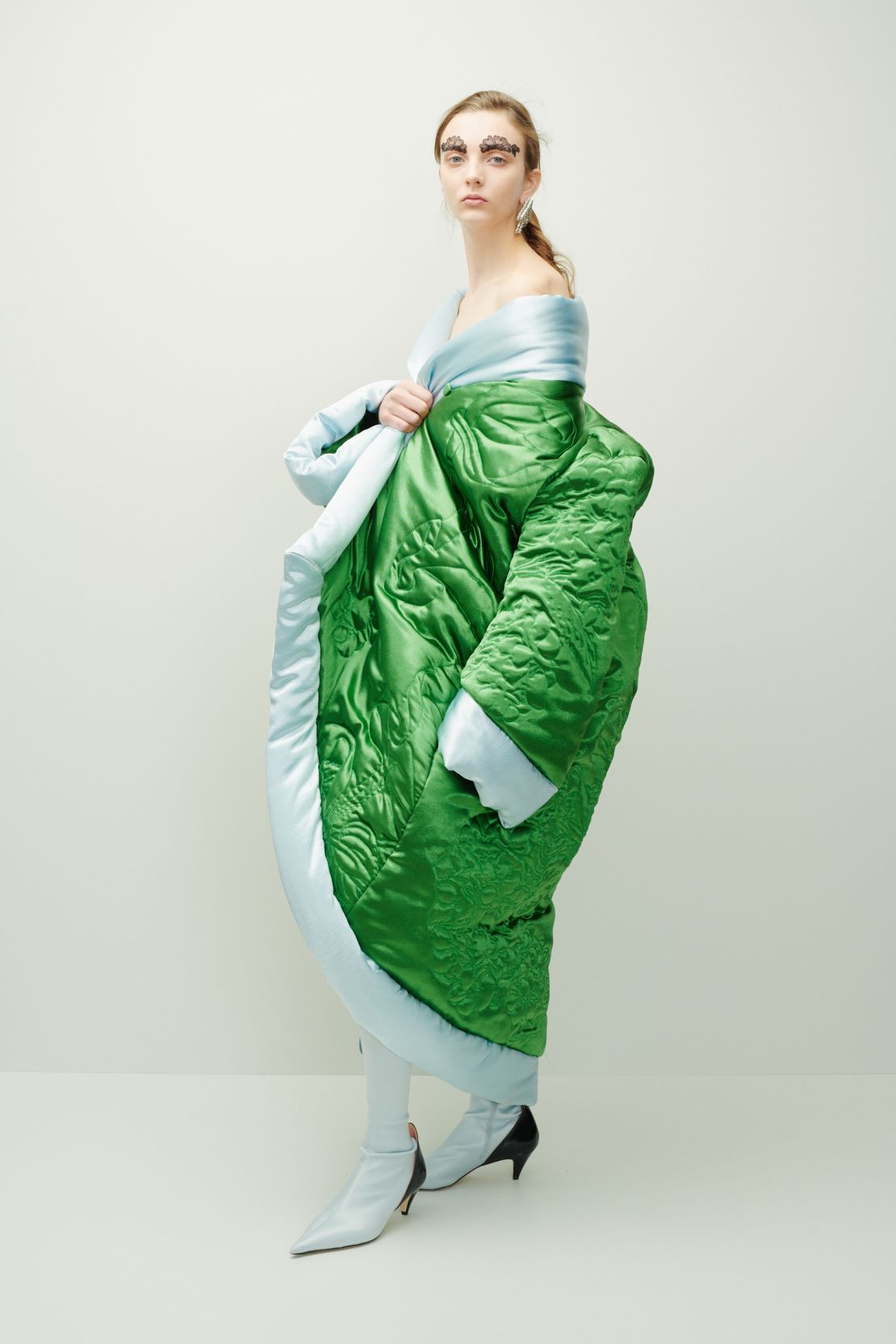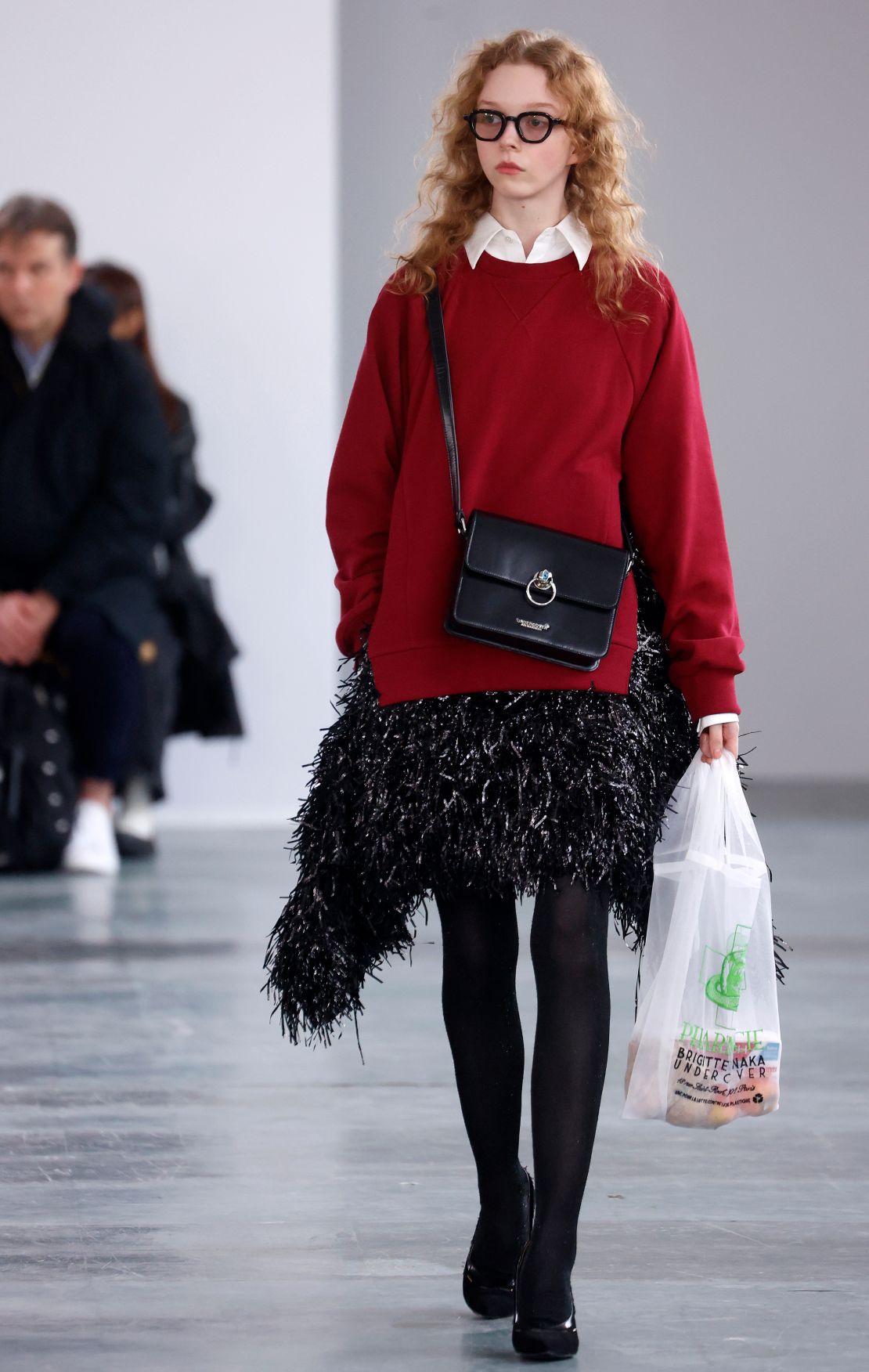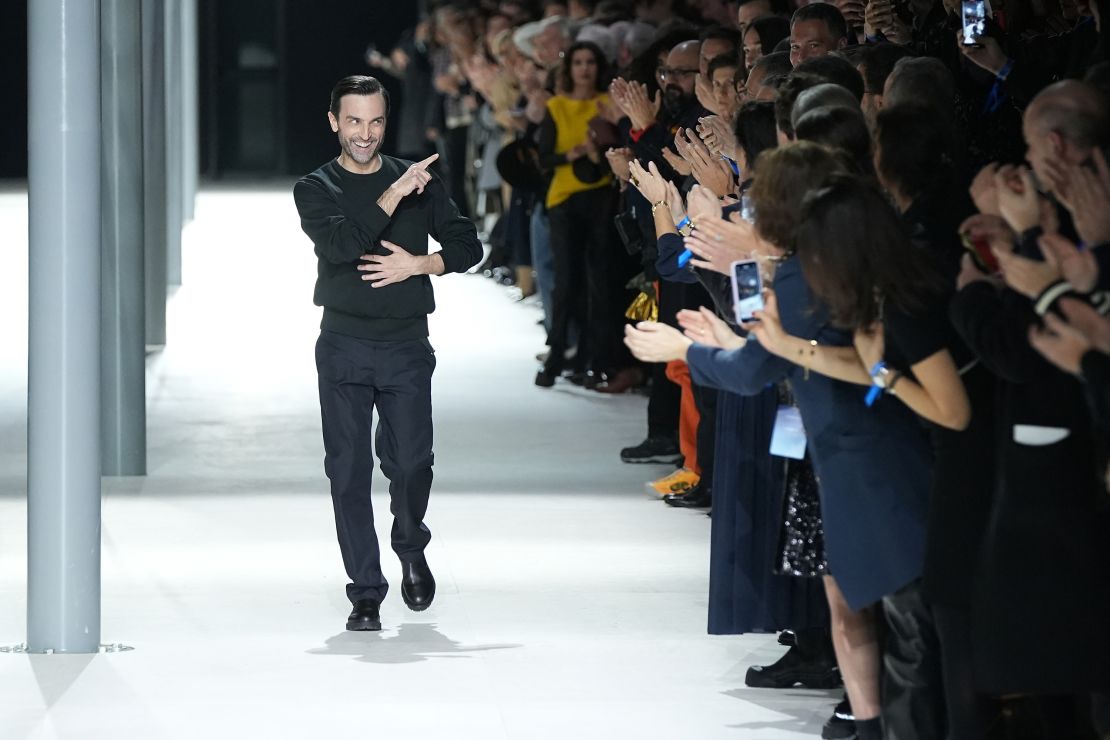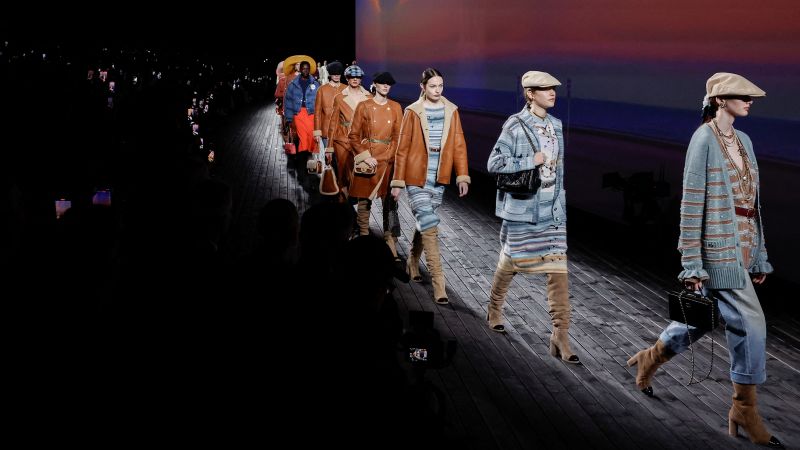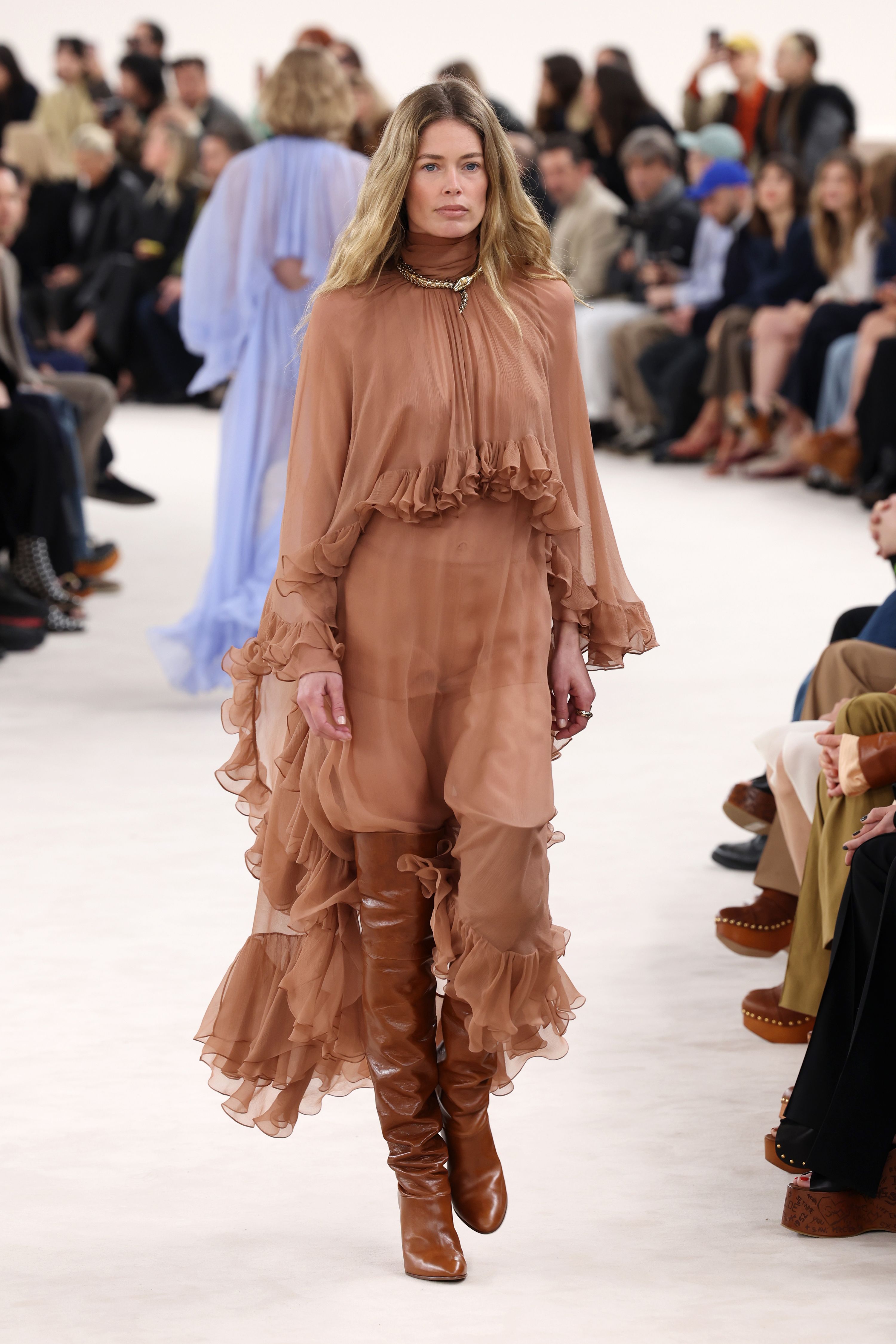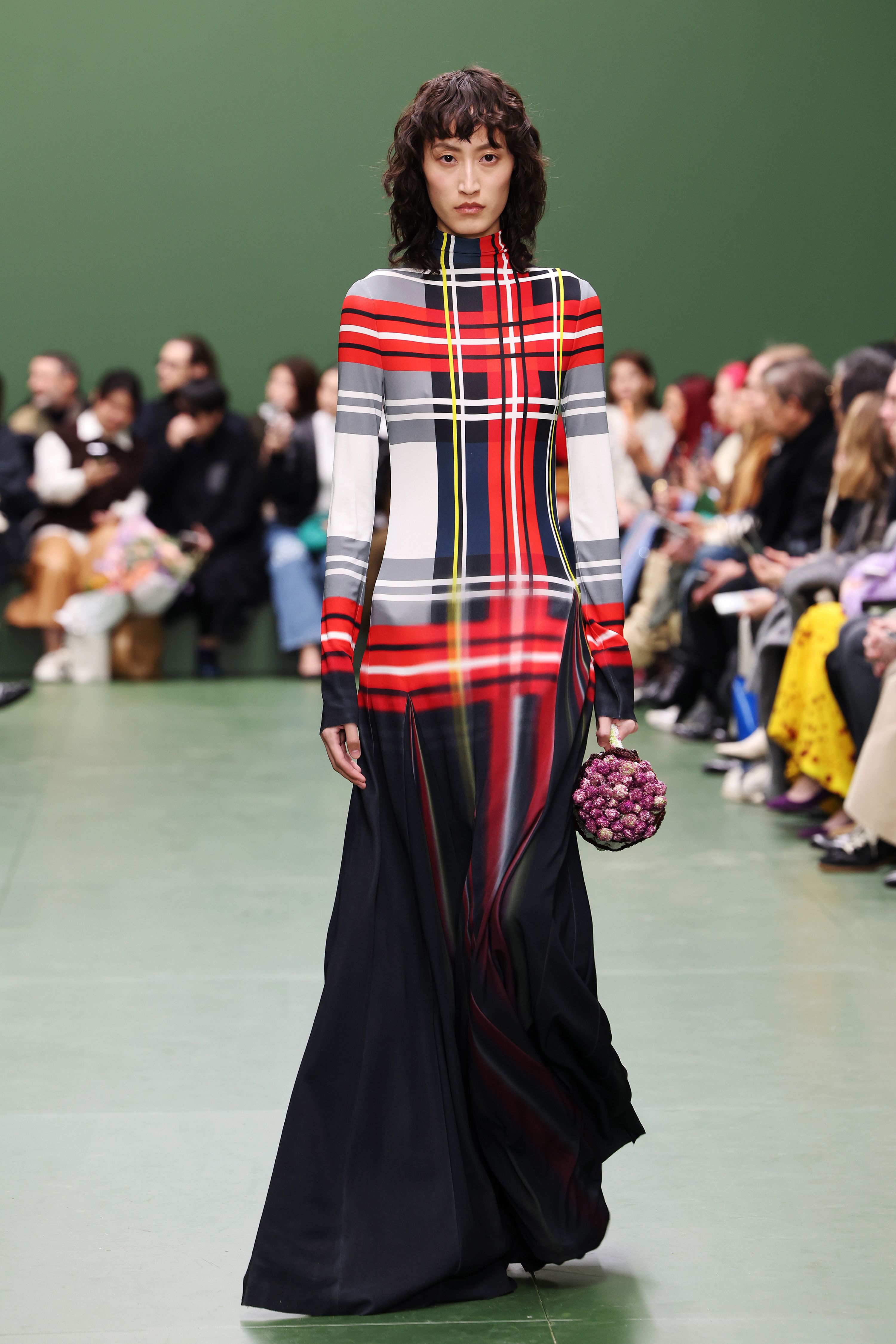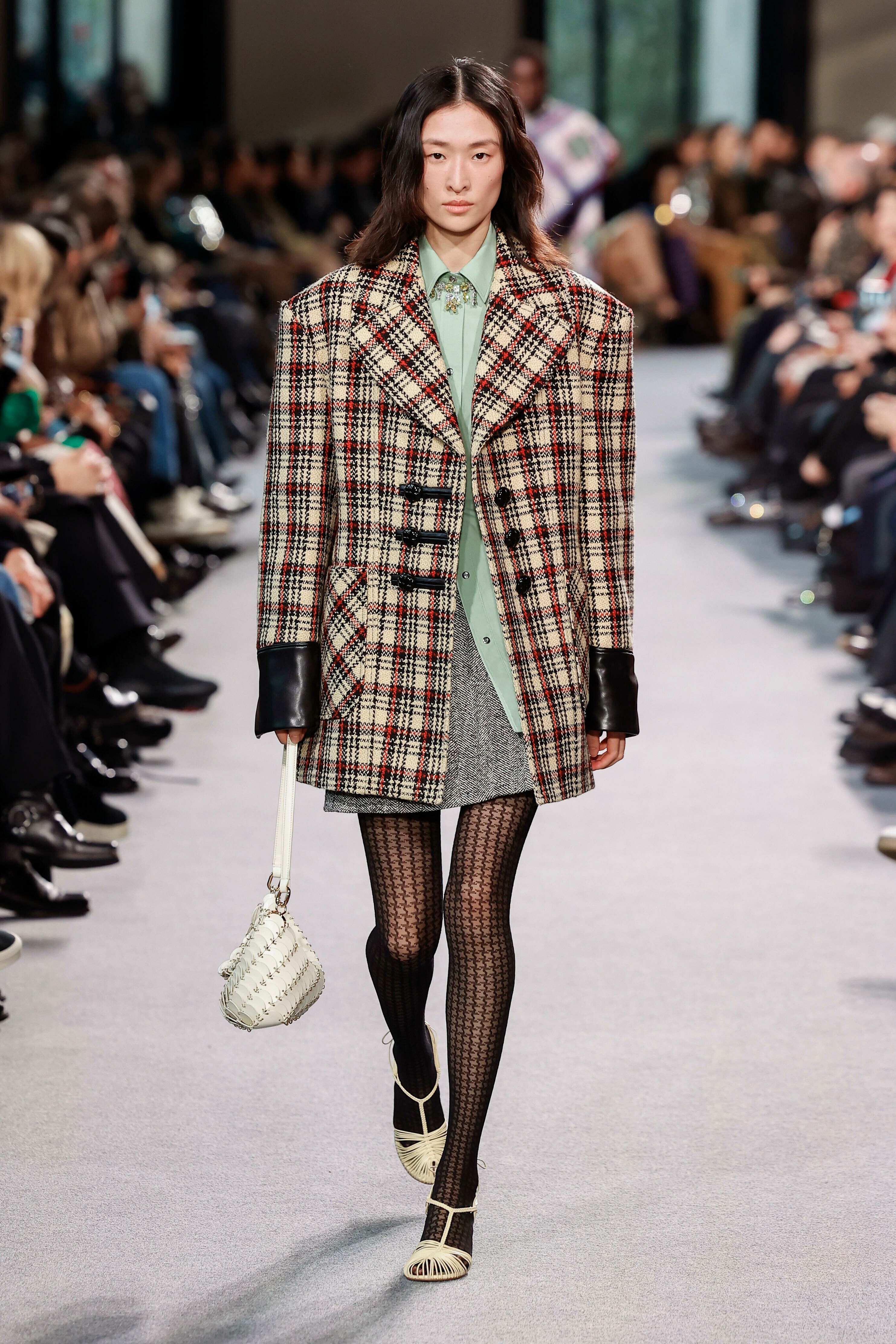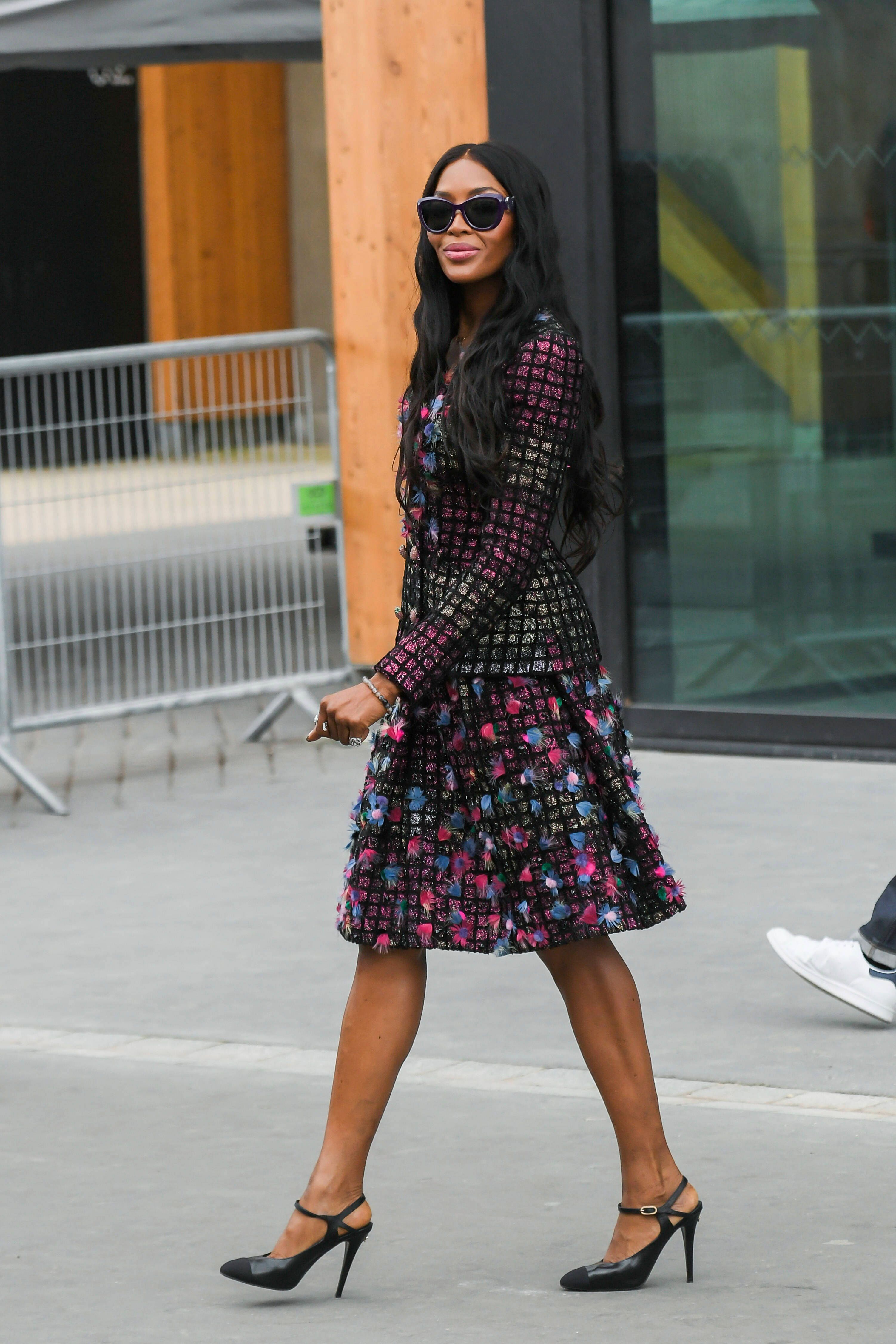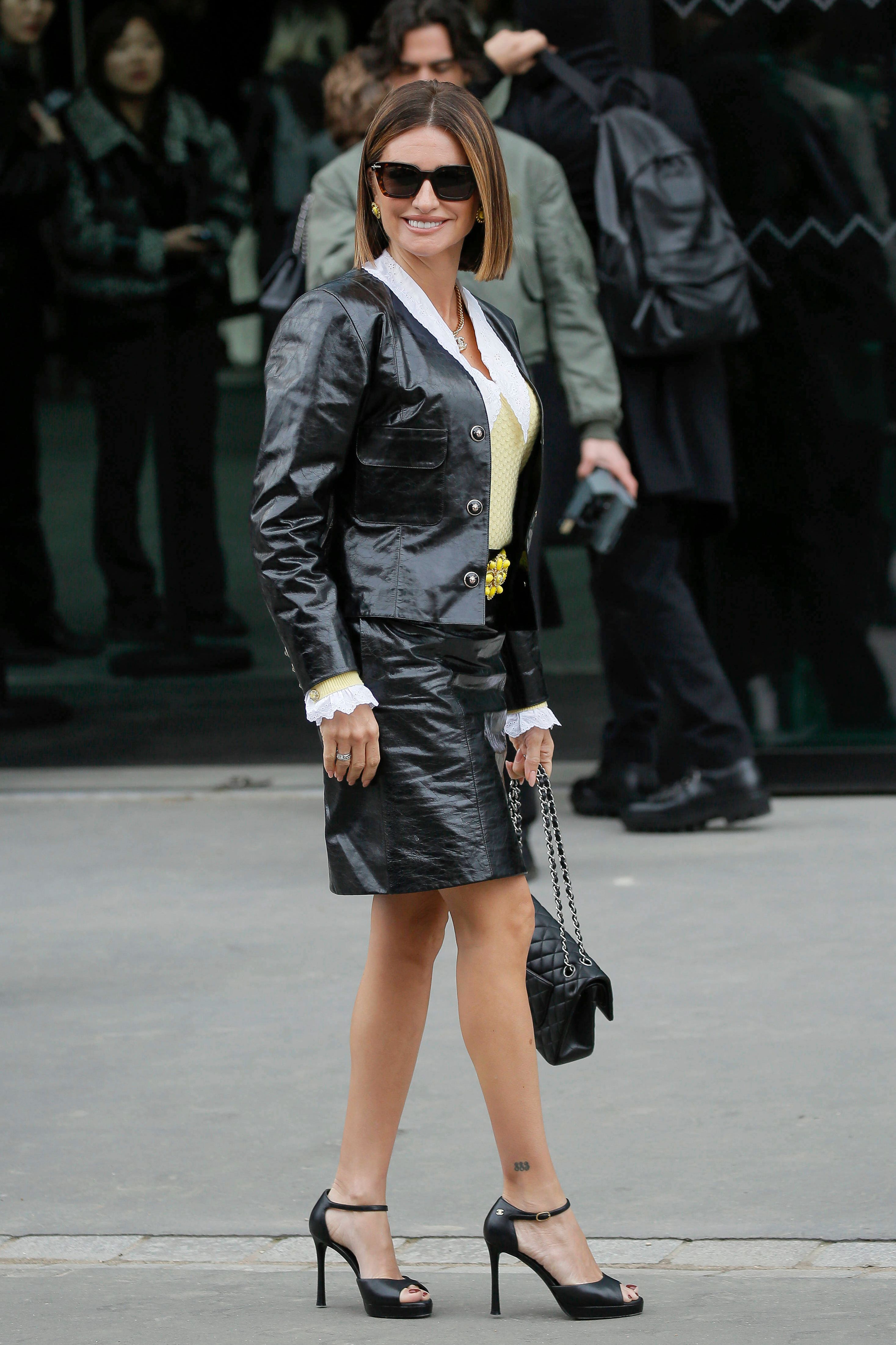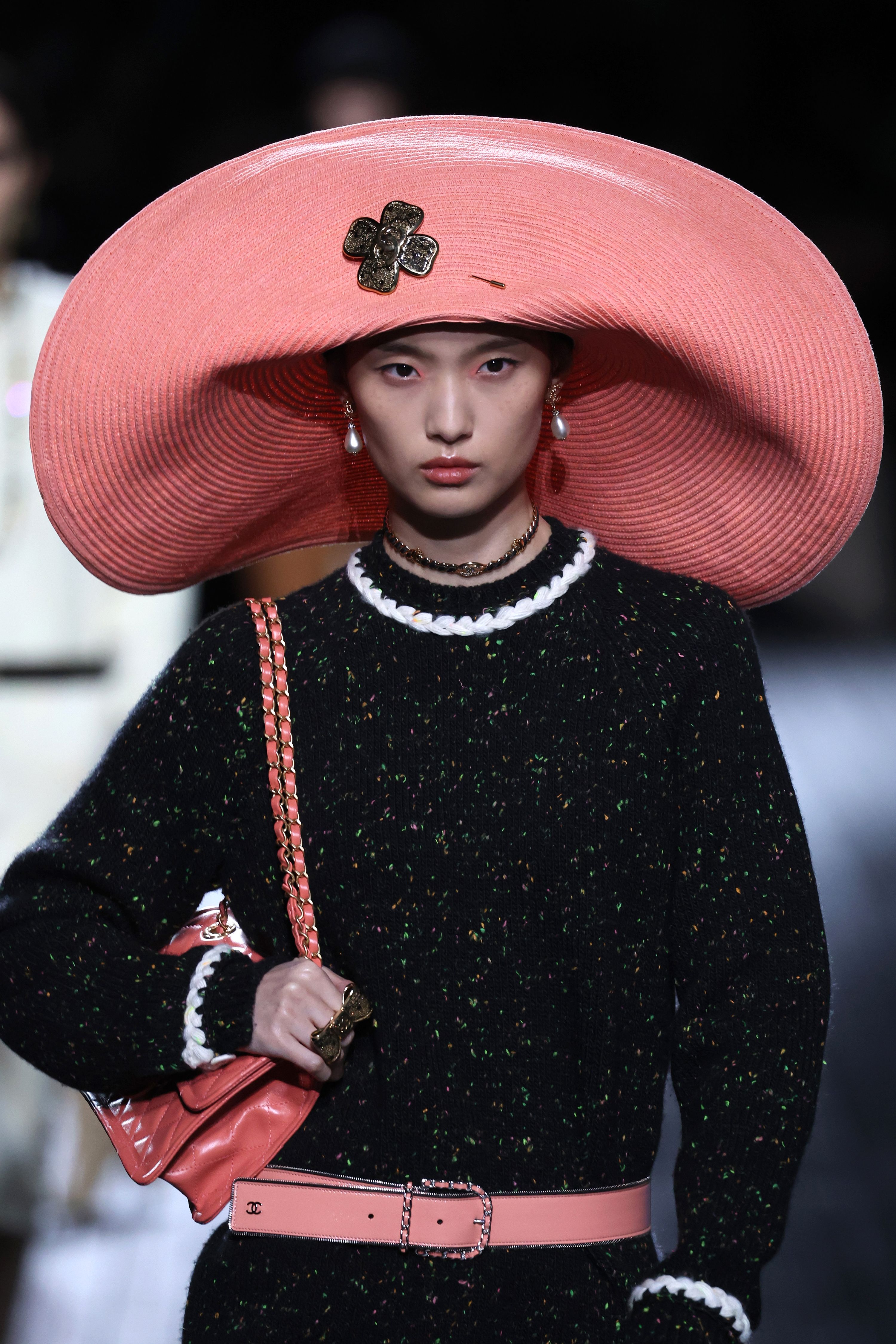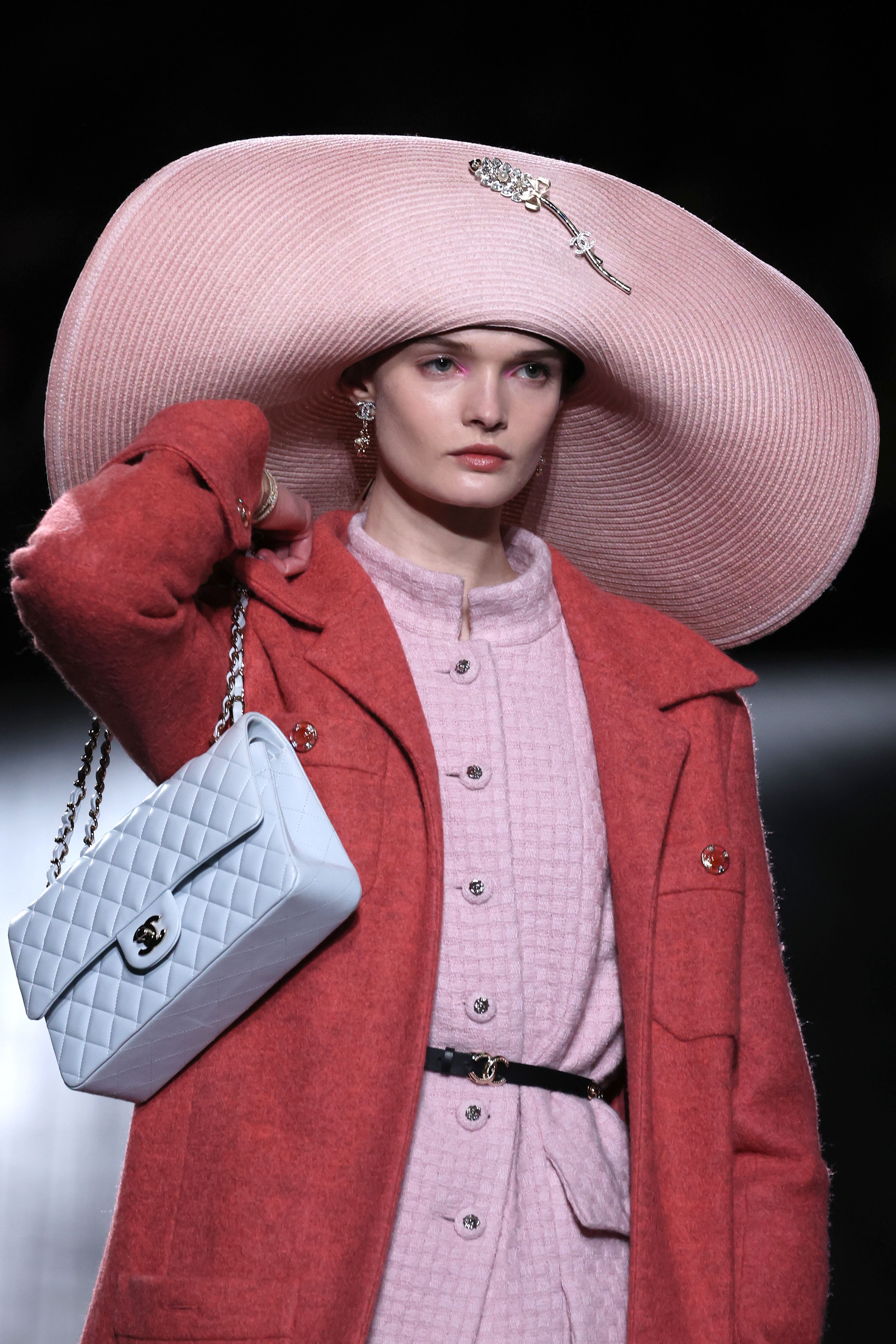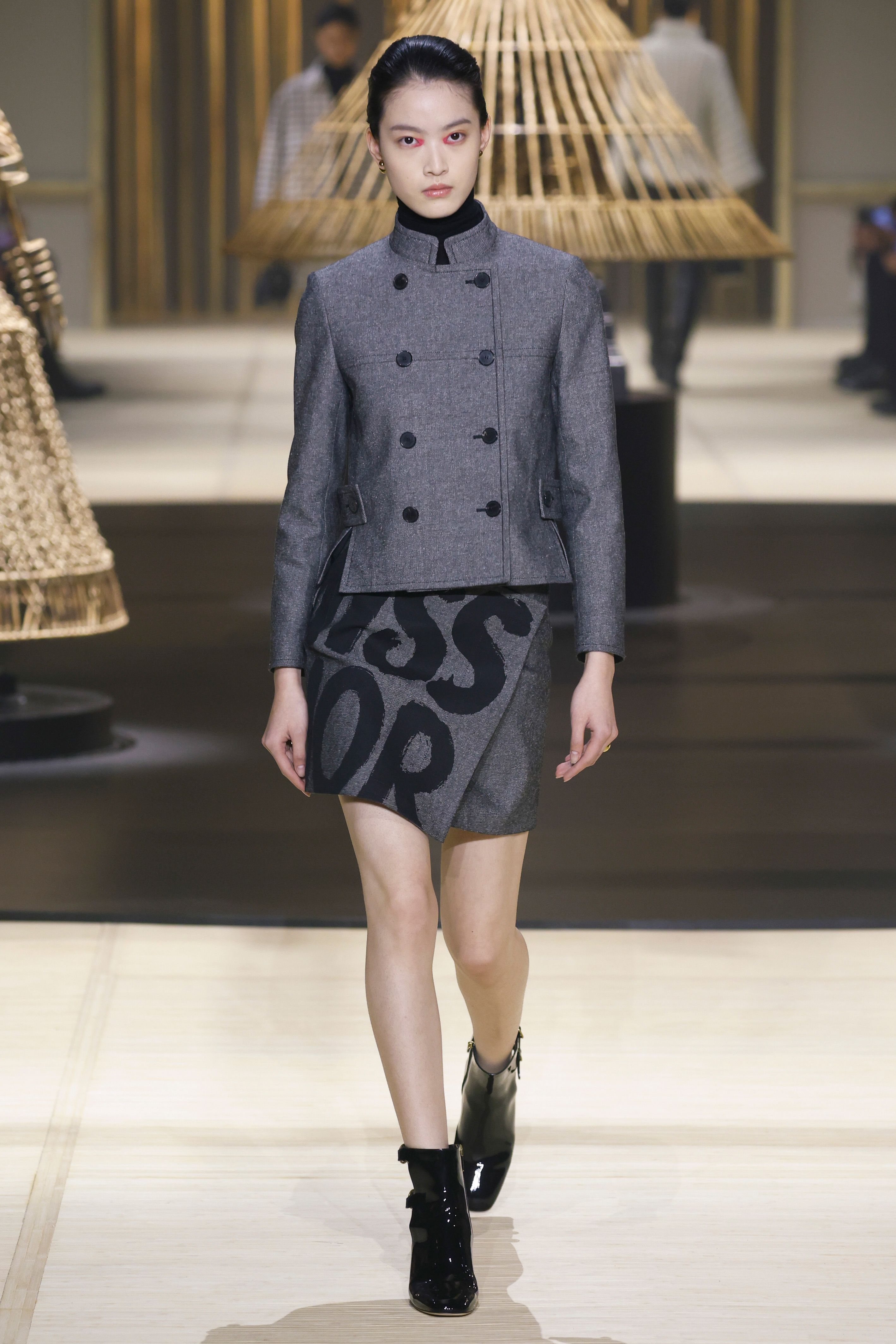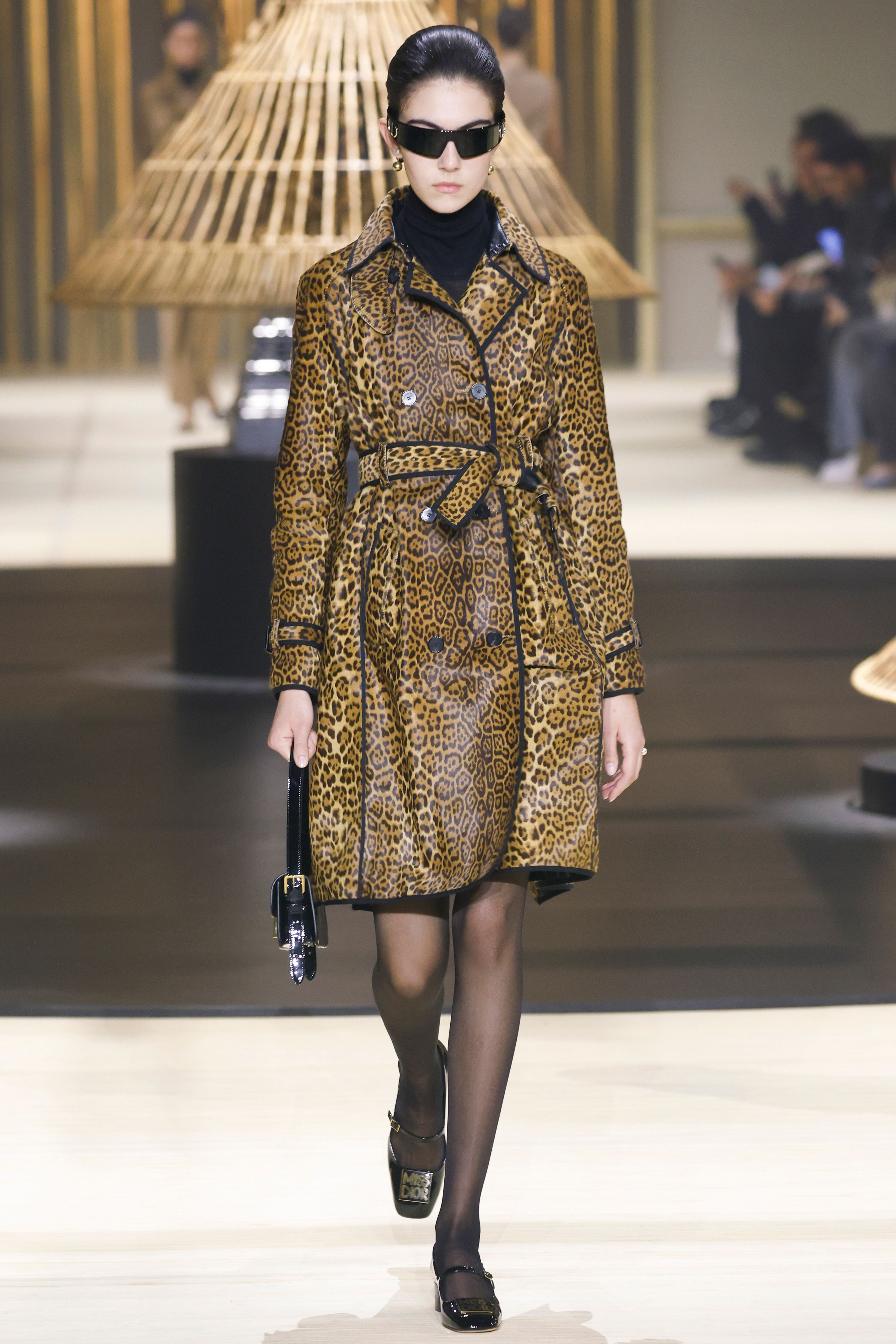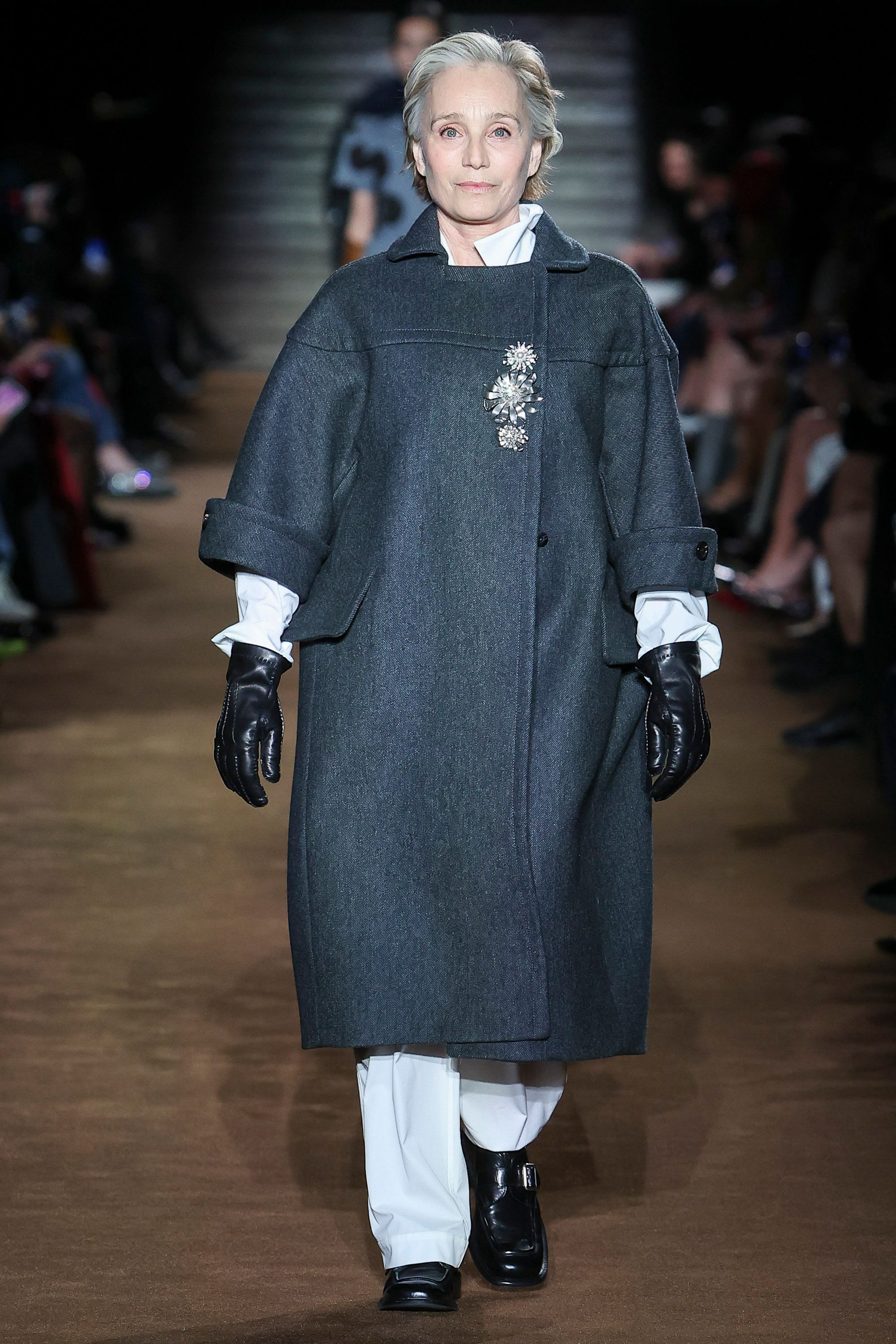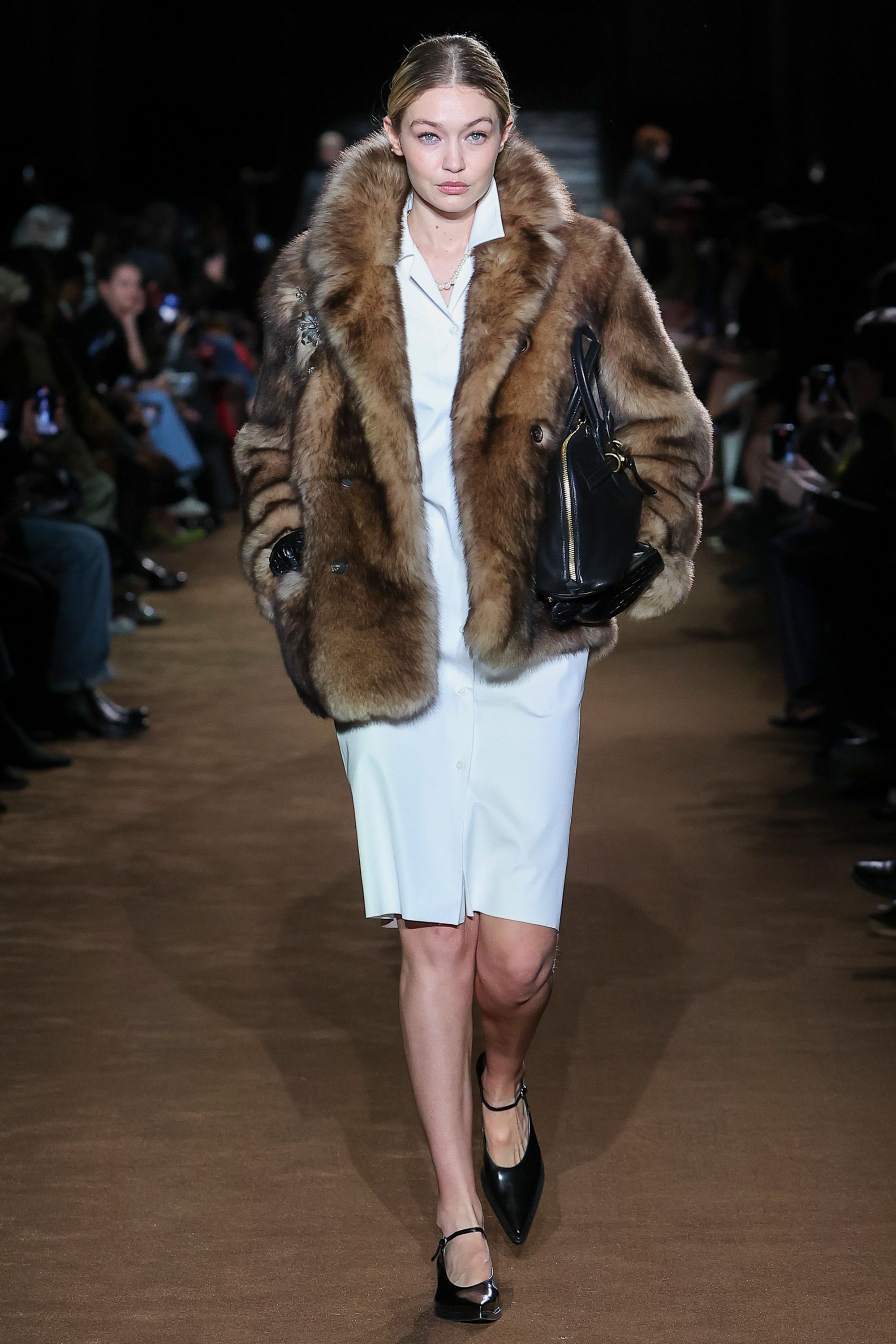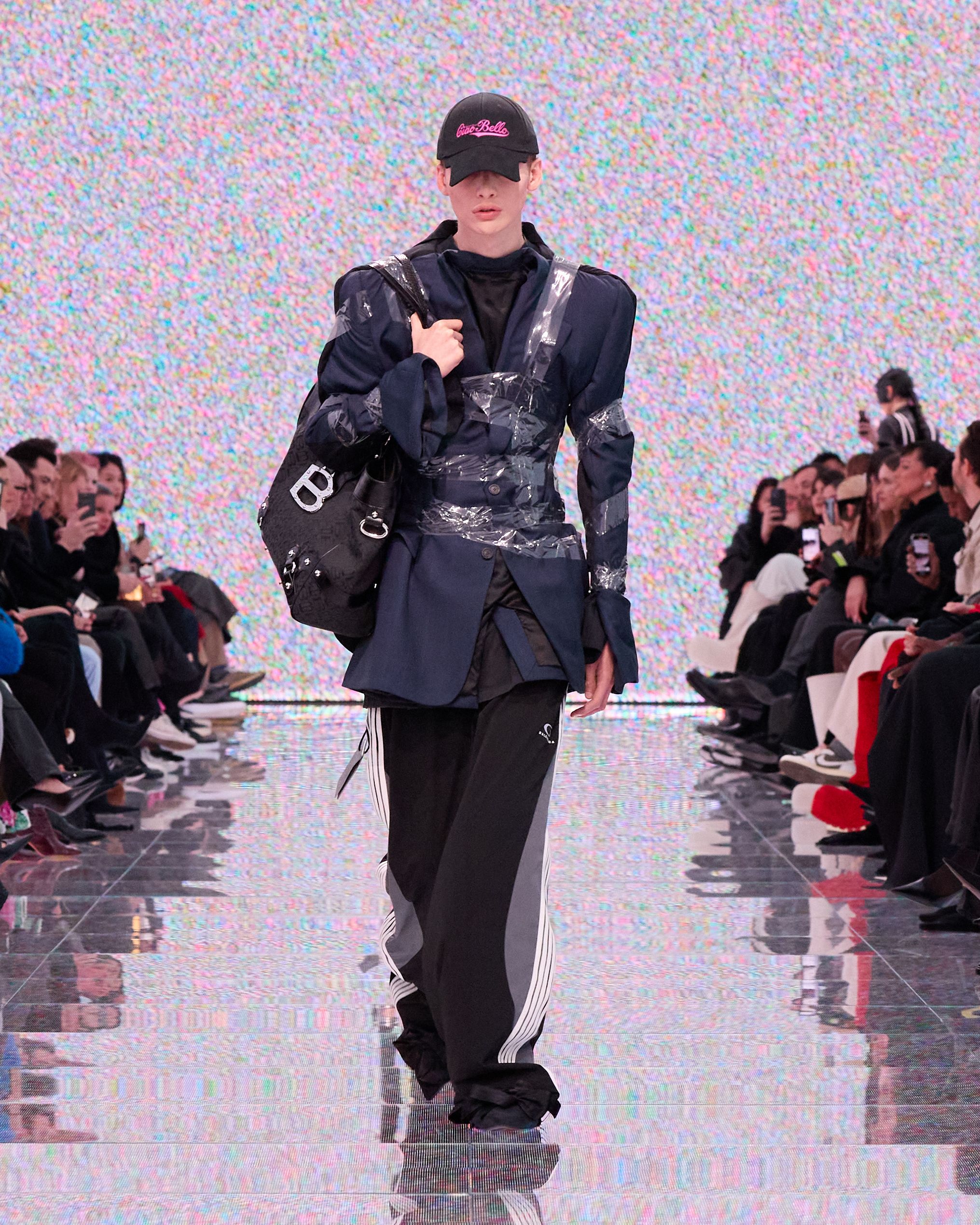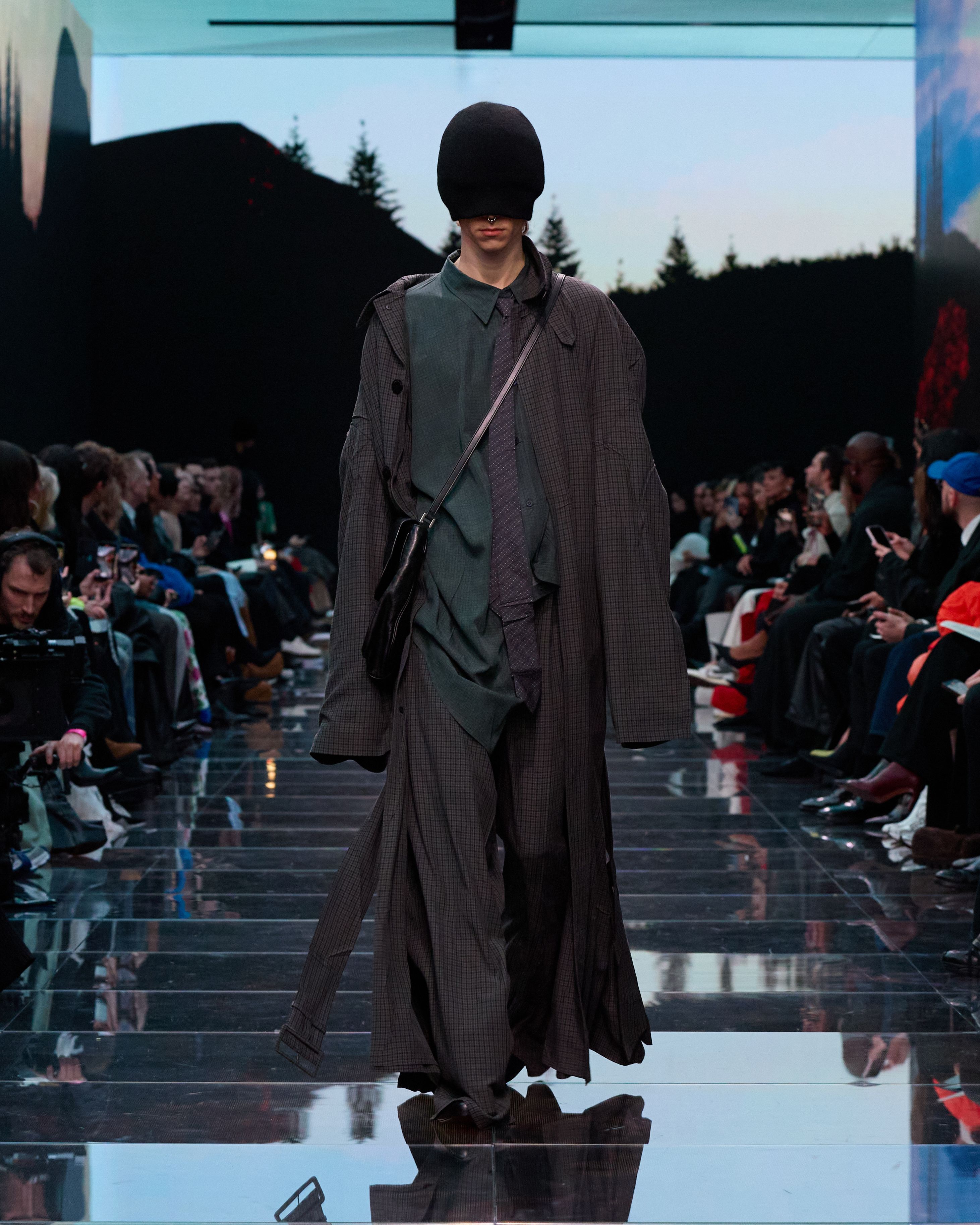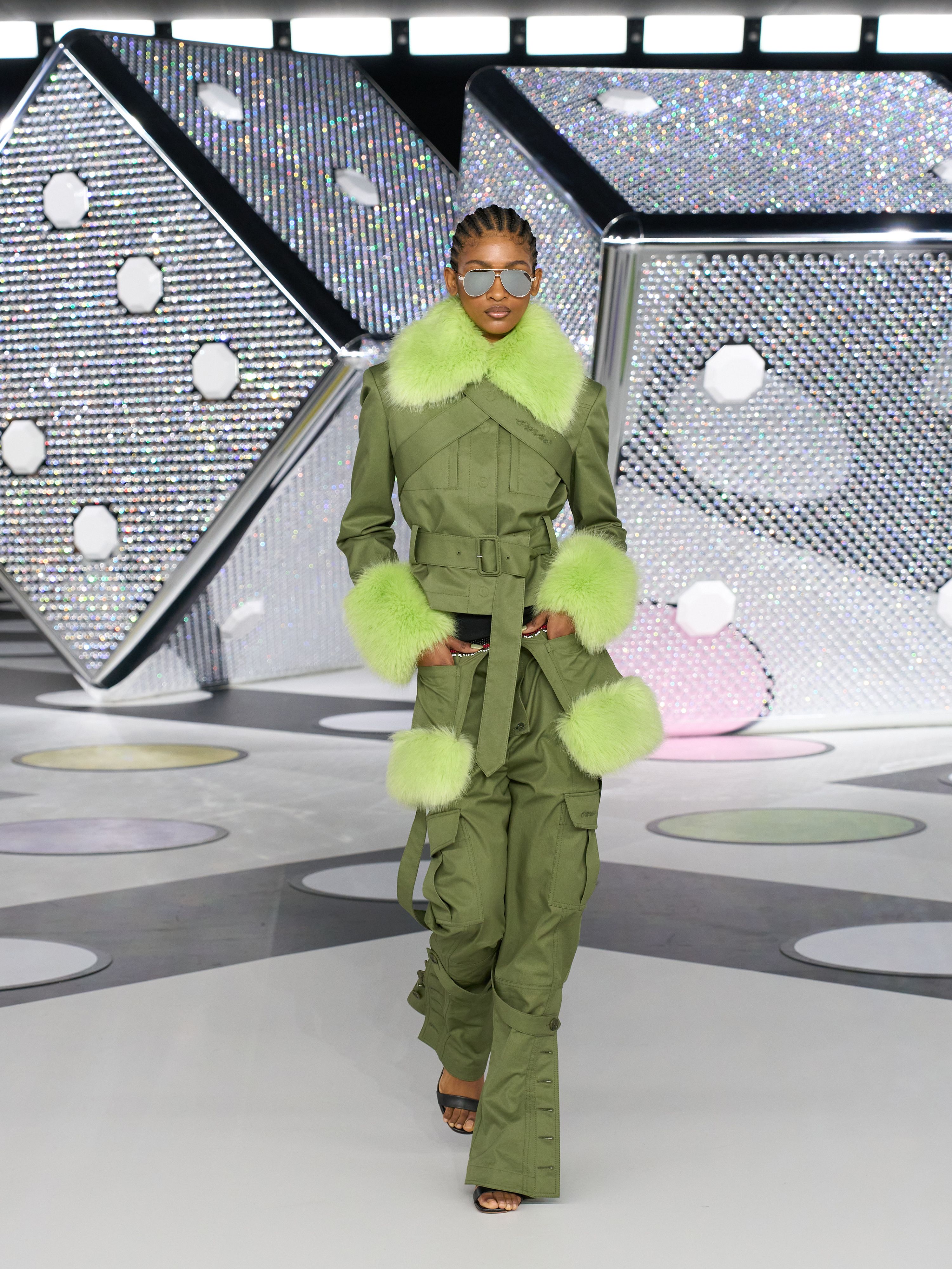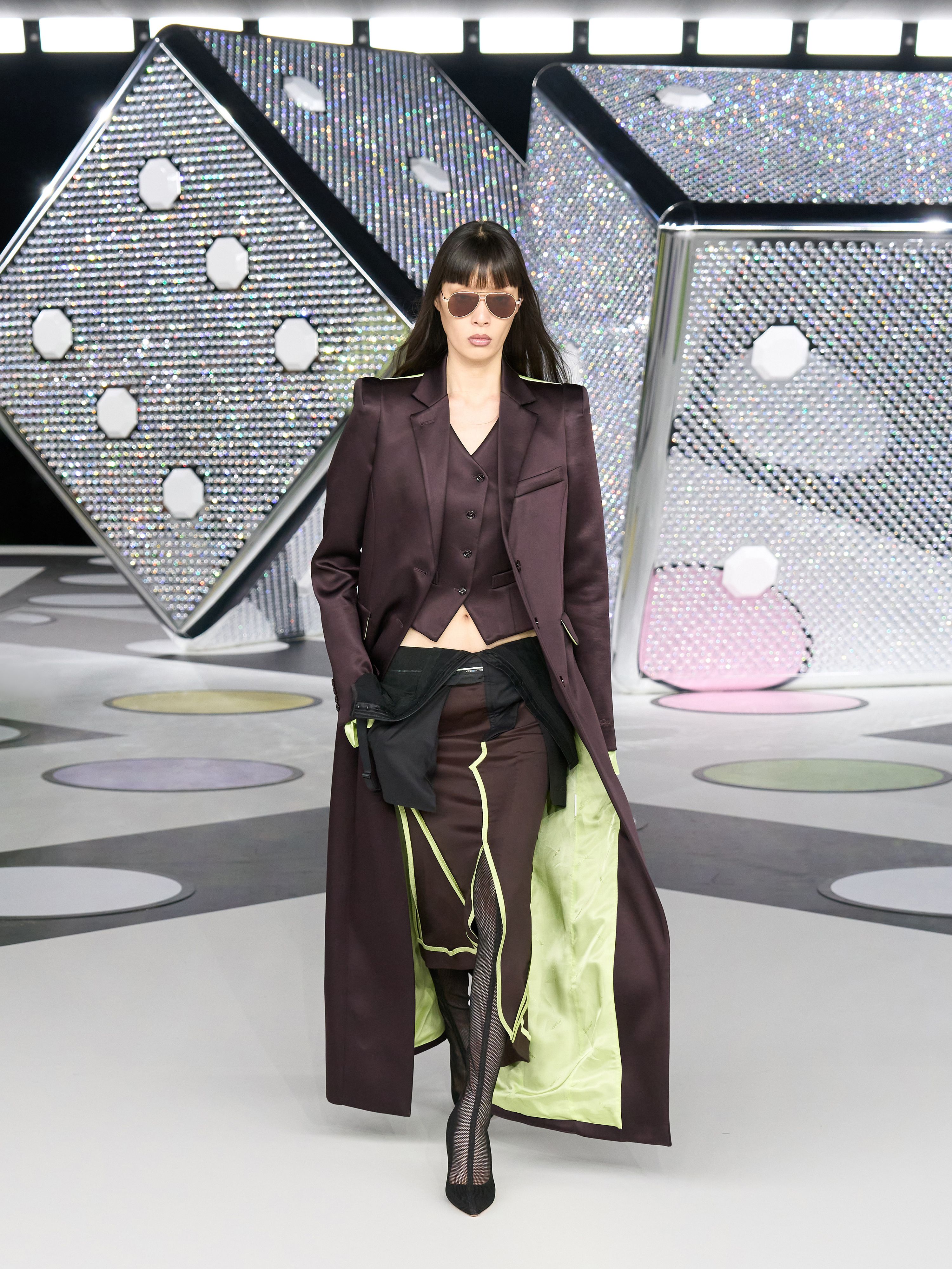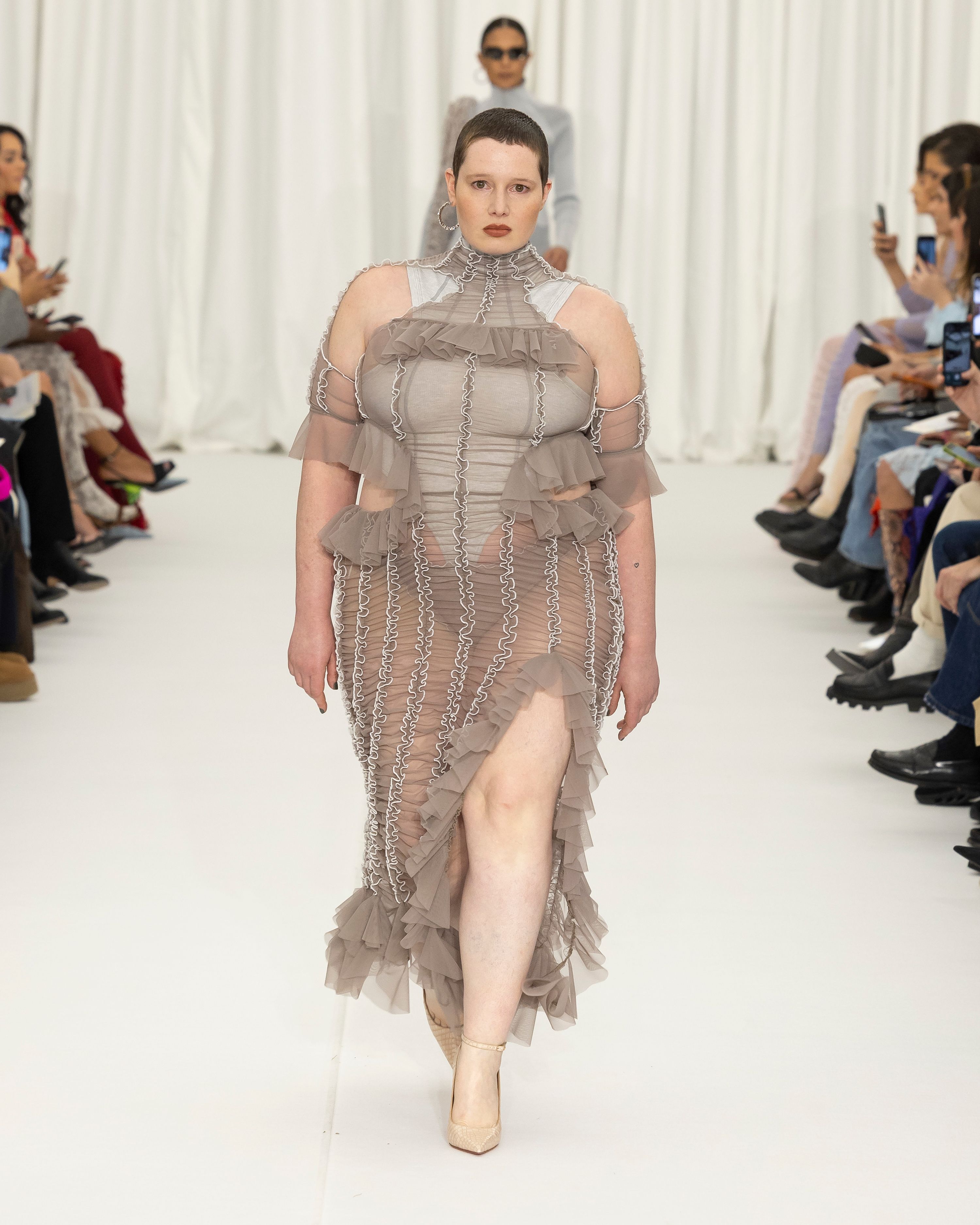Editor’s Note: CNN Style is one of the official media partners of Paris Fashion Week. See all coverage here.
Paris
CNN
—
Although Paris Fashion Week is usually the talk of the town — and every social network — this week the French capital was preoccupied with events more notable than clothing.
In an historical vote on Monday — a few days ahead of International Women’s Day (March 8) — the French parliament enshrined the right to abortion into its constitution, the first country in the world to do so. As runway shows popped up in every neighborhood, hundreds also gathered at the city’s famed Trocadero in front of the Eiffel Tower, to follow the historic event on giant screens.
Paris has been a theater of style and politics for decades, so it is intriguing to note the revival of late 60s fashion this week. Indeed, this season’s Saint Laurent show revived many aspects of the founder’s 1968 collections (which can currently be admired at the Saint Laurent Museum in the French capital) featuring thinly — but colorfully — veiled nudity. A sartorial manifestation of sexual freedom that coincided with the student revolts of May 1968 where women fought notably for reproductive rights — then, and now again.
So if clothing embodies needs, desires and progress, what can be deduced from this week’s garments, shown at a time and place when sexual agency is once again taking center stage?
On runways, the women conjured seemed to thrive towards new realities, possibilities and celebrations. Japanese label Undercover dedicated its collection to working mothers, as models marched with bags filled with groceries to the sound of a poem by movie director Wim Wenders, “Watching a working woman.” Balmain’s was an ode to older women, Ester Manas focused on women of all sizes, whilst Nina Ricci highlighted sexually emancipated gender roles. The Parisienne’s static archetype seemed to embrace less normative, narrow ideals towards a wider scope of lifestyles and choices.
The week, all seemed possible — even living your life as a Kate Moss lookalike, as model Denise Ohnona showed when she fooled paparazzi and social media users alike as she marched down the Marine Serre runway. The sky’s the limit.
If revivals and historical citations always come carrying reinvigorated meanings, this season’s love affair with retro chic was no exception.
Rochas’s first collection by Alessandro Vigilante delved into the house’s 1930s archives. Presented in a boudoir-like setting, old-school glamour was on display. Think technicolor lace, satin lingerie, froissé (mussed up) velvet indoor pieces – as a way to tie back to “one’s imagination and to anticipate women’s desires” said the designer after the presentation, offering indulgent rather than flashy luxury.
Chanel’s show was steeped into Deauville references, the French beach resort in Normandy where Coco first set foot in 1913. The seaside-inspired collection featured pinned up floppy hats, soft knitted suits and loose embroidered tweed, celebrating a sense of freedom of movement and mobility.
As for Chemena Kamali’s debut for Chloé, the show cited the house’s early years in the 1970s, with flouncy blouses, sheer ruffled dresses and dangling golden jewelry merged with post-Y2K boho chic (Sienna Miller sat front row witnessing her own revival). For Kamali, this sought to communicate a message of unfiltered liberty and beauty. “I want to honor the forward-thinking spirit that Gaby Aghion pioneered when she founded the house more than 70 years ago,” she said in the show notes. “She wanted to liberate women and empower them to be daring and feel free.”
A bejeweled, preppy Kristin Scott Thomas at Miu Miu, sex-bomb Farida Khelfa at Mugler. Carine and Julia Roitfeld side-by-side at the Victoria Beckham, show and Anna and Pat Cleveland next to Jerry Hall and Georgia Jagger at Chloé. Both front row and on runways, women of all ages were present.
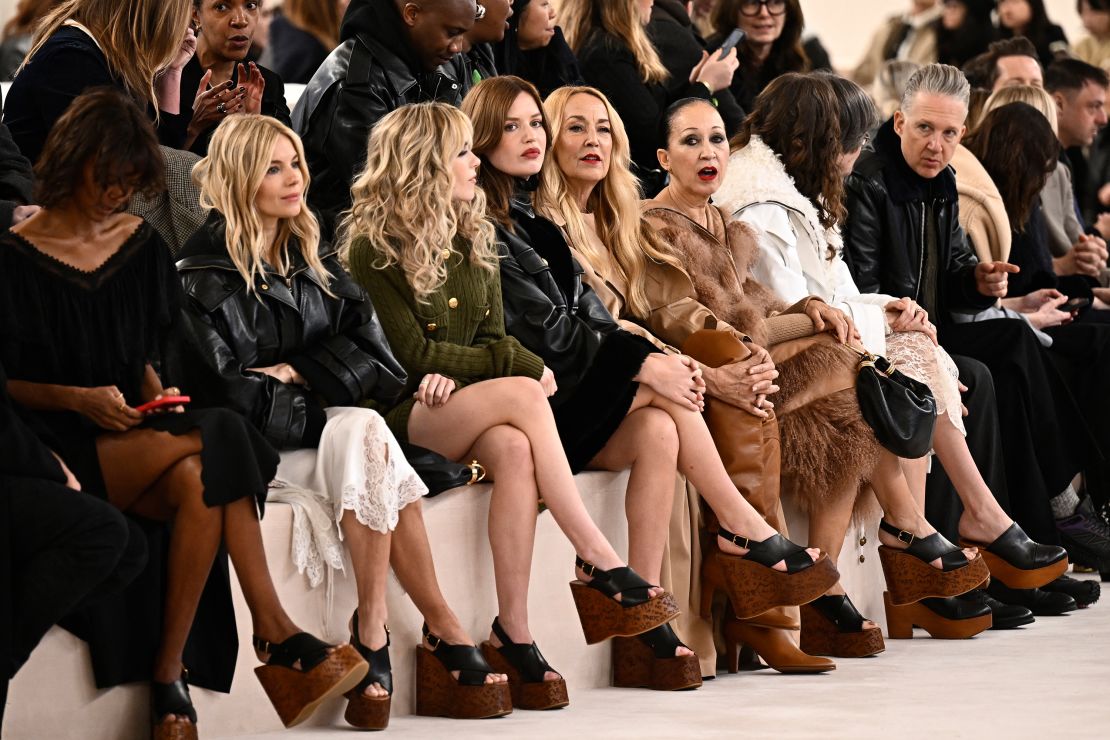
Moving away from a seemingly never-ending “kidulthood” ideal, older models sported all looks and genres, from the techno-infused at Balenciaga to dishevelled punky tailoring at Ottolinger, proving there is no age barrier to embracing subcultural trends.
“Age is not something I think of, or which defines (my) woman’s style – to me she stands out by her attitude, her singularity, her eccentricity’’ said designer Charles de Vilmorin about his eponymous ready-to-wear debut, made of arabesque-adorned silk pieces.
Are heritage houses targeting mothers and daughters through one same collection? At Loewe — like at Rabanne — the playful use of tartan could be read both as a simultaneous wink to heritage and grunge. At Dior, twisted classics — a trench-coat, but make it cropped, in leopard print, or splattered with the words “Miss Dior”— seemed to be both referencing Jackie O and Gossip Girl.
Traditionally, showing interest in celebrities (“Les people” in Parisian slang) was a big no-no amongst the proudly snobby French fashion press. Yet, this season more than ever before, the true show was very much on the front row: Salma Hayek and Kim Kardashian chatting away at Balenciaga; Naomi Campbell and Penelope Cruz catching up at Chanel; Hari Nef, Emily Ratajkowski and Charli XCX striking a pose, seemed to be part of the spectacle itself. Not forgetting the K-pop stars gathering hordes of fans outside venues.
It is a trend that points to a total shift in the French media landscape. Alexandre Maras, deputy editor-in-chief and head of social media of leading celebrity magazine Gala (its TikTok account amasses over 10m followers) said “editors once were reluctant to integrate celebrities in their coverage, but today, post-pandemic and with the rise of TikTok, every single title documents (a star’s) presence as it drives the most traffic. It has led the way to other celebrities, social media stars, sports players, and has changed the way we think of fame, and who we consider famous.”
Pulling away from meme-like fashion that has ruled runways and TikTok alike, the quiet luxury movement continues apace.
The Row’s show had a “no phones” policy. Debates on-line didn’t miss the point: What was it really about, discretion or elitism? Victoria Beckham entered a more conceptual, sculptural design phase that is anything but Insta-baiting. From Hermès to Carven’s debut by Louise Trotter or Dries Van Noten, the focus was on elevated minimalism for discreetly opulent wardrobes.
“There is a sense that fashion is re-centering on ultra-luxury customers with private salon (events), (increased) discretion and private offers, inspired by the couture tradition of yesteryear,” said Sophie Abriat, fashion journalist at Le Monde newspaper’s magazine, M. “There is a return to classical, hushed opulence, suggesting a pre-21st century, ladylike Parisienne with a focus on quality’’ she added about wardrobes fit for only a few lifestyles and budgets.
Sexy — not to say nude — was also part of the agenda, as Valentino, Saint Laurent and Givenchy opted for entirely sheer, dramatic formal evening wear. Clothing for women who needn’t worry about public transport.
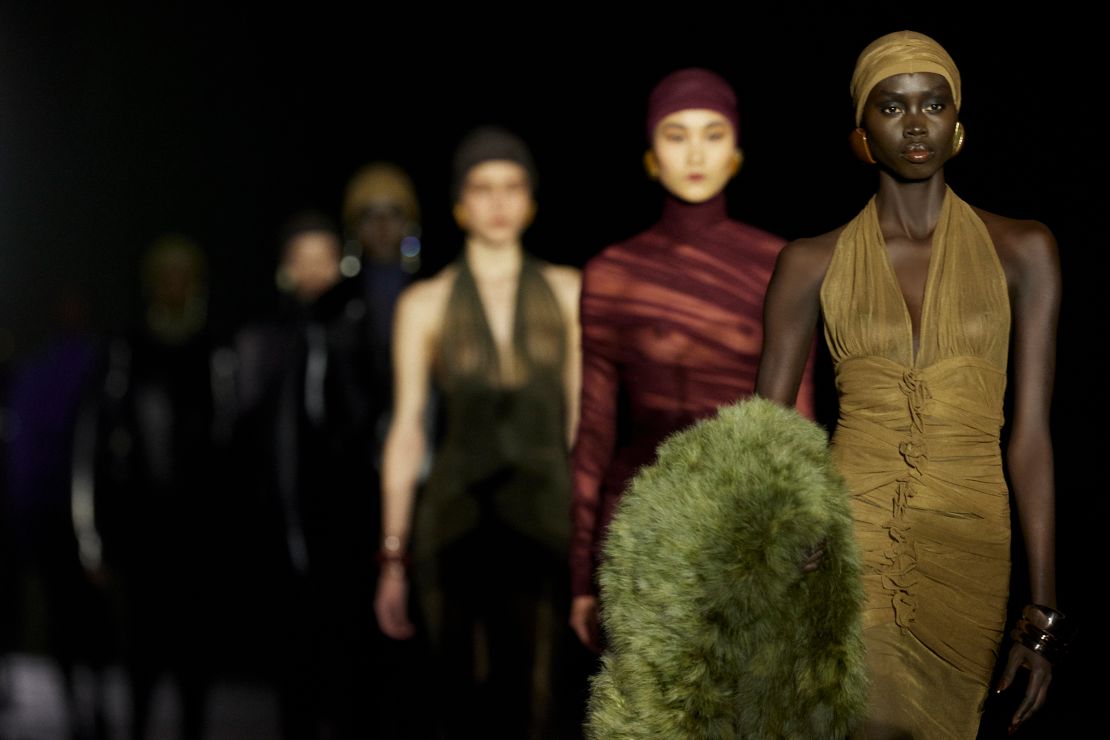
And then there is Creativity with a capital C, not only as displayed in the clothes, but everywhere else. “The creative part, (including) the set design, is the most luxurious part (of the show). Luxury is scarcity, it is something rare. And creativity is rare right now,” said Balenciaga creative director Demna after the show. With invites consisting of individually thrifted presents sent to guests, the collection was bathed in a soundtrack by musician (and husband) BFRND and featured floor-to-ceiling screens.
At Acne, architectural molded dresses marched through a dystopian decor by Estonian artist and scupltor Vilu Jaanisoo made from recycled tires to accompany a collection quoting punk and S&M — fit for an art gallery as much as a red carpet.
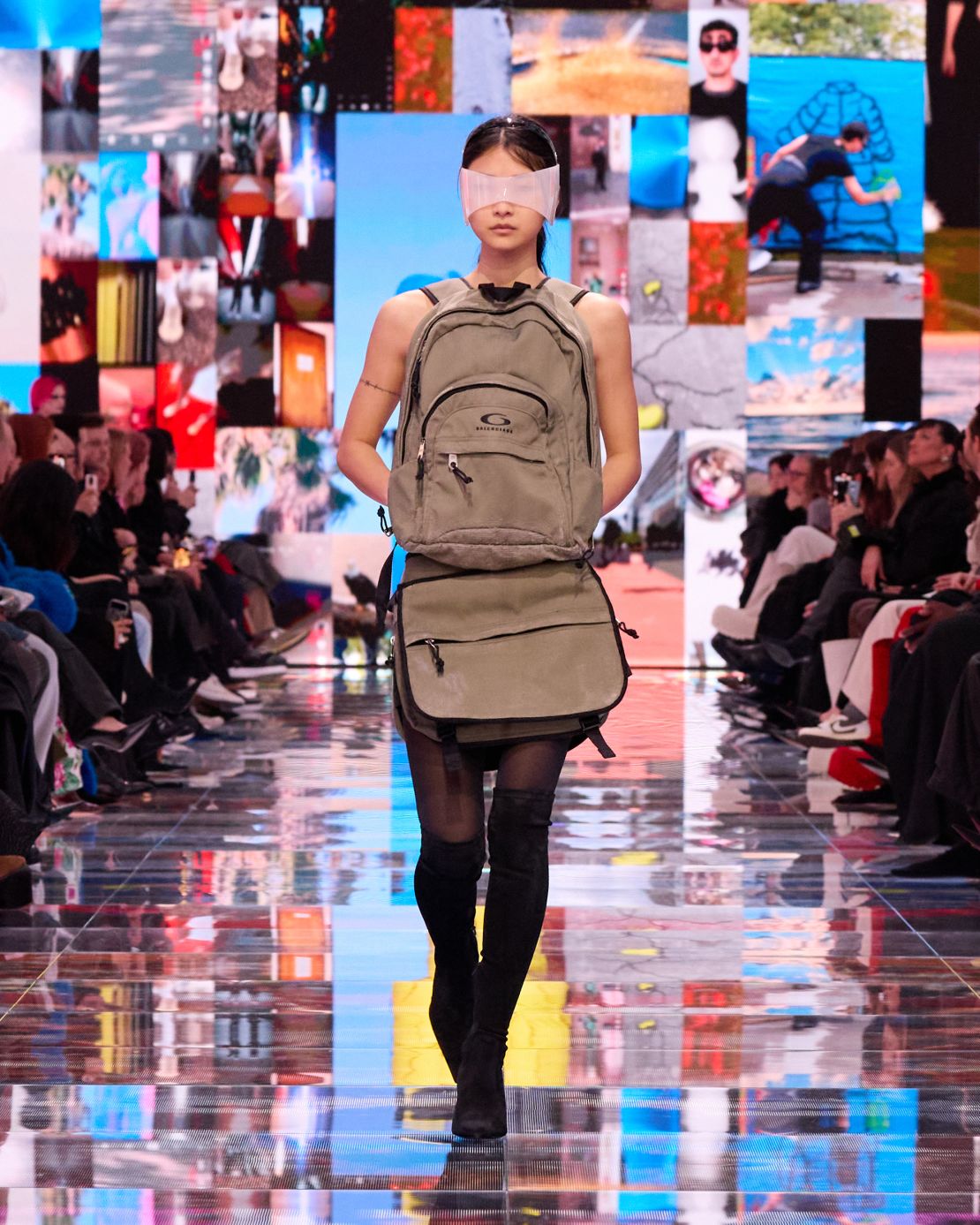
At Courrèges, the futuristic, deconstructed silhouettes circled around an inflated decor that appeared to breathe, co-created by set designer Rémy Brière, label artistic director Nicolas Di Felice, and creative studio Matière Noire. In creating these “moments,” shows become bespoke art performances, an unique experience that brings an added value for people present.
“Form follows function,” architect Louis Sullivan wrote in 1886, and this guideline for designers has not lost its power to inspire.
Today, that means understanding the daily needs of women as a starting point to innovation. At Marine Serre, stretchy night-meets-day bodycon pieces, complete with pizza boxes and a caddy as runway accessories, suggest clothes that follow various emergencies and cravings, round the clock.
All best illustrated by McQueen, and Seán McGirr’s debut, who shuffled the archetypes, volumes and roles a woman might play within a day. And at Off-White, creative director Ib Kamara’s working woman, global and ageless, came with faux fur, maximalism, in playful, hybrid cuts, breaking boundaries, expectations and labels. Something familiar to Nicolas Ghesquière, who blew out his 10th candle as the head of Louis Vuitton — marking a decade of a fashion both futuristic and steeped in ancestral savoir-faire, as ubiquitous as its monogram. For busy women, multitasking women, women who can.
